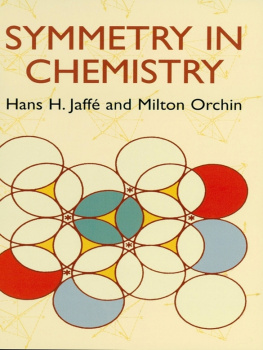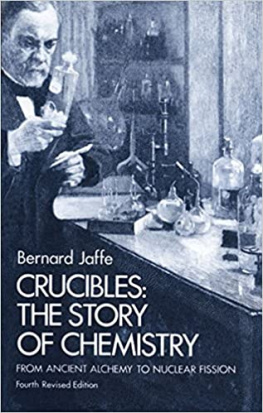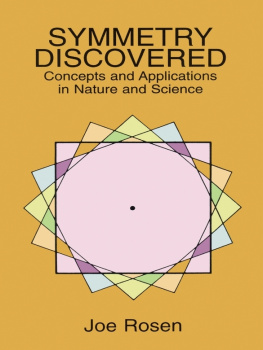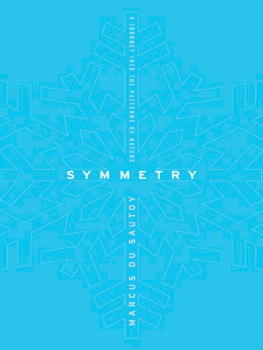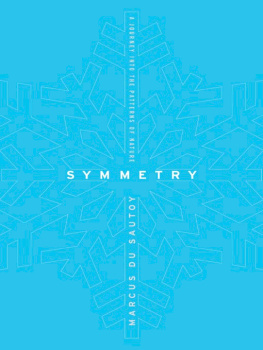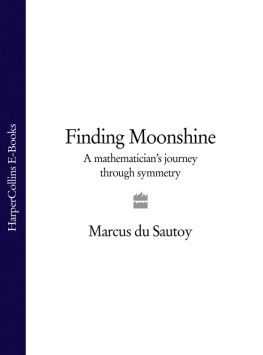Hans H. Jaffé - Symmetry in Chemistry
Here you can read online Hans H. Jaffé - Symmetry in Chemistry full text of the book (entire story) in english for free. Download pdf and epub, get meaning, cover and reviews about this ebook. year: 2012, publisher: Dover Publications, genre: Children. Description of the work, (preface) as well as reviews are available. Best literature library LitArk.com created for fans of good reading and offers a wide selection of genres:
Romance novel
Science fiction
Adventure
Detective
Science
History
Home and family
Prose
Art
Politics
Computer
Non-fiction
Religion
Business
Children
Humor
Choose a favorite category and find really read worthwhile books. Enjoy immersion in the world of imagination, feel the emotions of the characters or learn something new for yourself, make an fascinating discovery.
- Book:Symmetry in Chemistry
- Author:
- Publisher:Dover Publications
- Genre:
- Year:2012
- Rating:5 / 5
- Favourites:Add to favourites
- Your mark:
- 100
- 1
- 2
- 3
- 4
- 5
Symmetry in Chemistry: summary, description and annotation
We offer to read an annotation, description, summary or preface (depends on what the author of the book "Symmetry in Chemistry" wrote himself). If you haven't found the necessary information about the book — write in the comments, we will try to find it.
Symmetry in Chemistry — read online for free the complete book (whole text) full work
Below is the text of the book, divided by pages. System saving the place of the last page read, allows you to conveniently read the book "Symmetry in Chemistry" online for free, without having to search again every time where you left off. Put a bookmark, and you can go to the page where you finished reading at any time.
Font size:
Interval:
Bookmark:
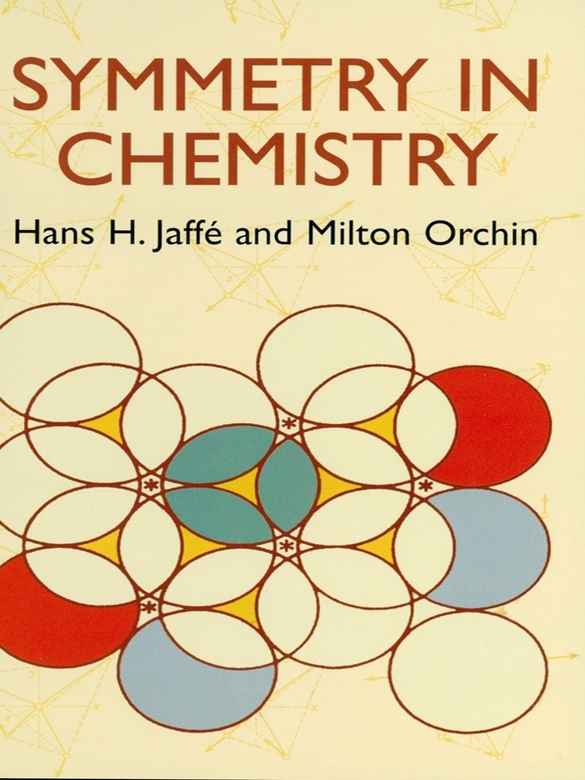
ELEMENTARY CHEMICAL REACTOR ANALYSIS, Rutherford Aris. (40928-7)
GROUP THEORY AND CHEMISTRY, David M. Bishop. (67355-3)
CHEMICAL AND CATALYTIC REACTION ENGINEERING, James J. Carberry. (41736-0)
MOLECULAR QUANTUM ELECTRODYNAMICS, D. P. Craig and T Thirunamachandran. (40214-2)
CHEMICAL MAGIC, Leonard A. Ford. (Second Edition, revised by E. Winston Grundmeier.) (67628-5)
SYMMETRY AND SPECTROSCOPY: AN INTRODUCTION TO VIBRATIONAL AND ELECTRONIC SPECTROSCOPY, Daniel C. Harris and Michael D. Bertolucci. (66144-X)
ION EXCHANGE, Friedrich Helfferich. (68784-8)
ADVENTURES WITH A MICROSCOPE, Richard Headstrom. (23471-1)
CRYSTAL GROWTH IN GELS, Heinz K. Henisch. (68915-8)
ALCHEMY, E. J. Holmyard. (26298-7)
THE DEVELOPMENT OF MODERN CHEMISTRY, Aaron J. Ihde. (64235-6)
CRUCIBLES: THE STORY OF CHEMISTRY FROM ANCIENT ALCHEMY TO NUCLEAR FISSION, Bernard Jaffe. (23342-1)
CRYSTAL CHEMISTRY AND REFRACTIVITY, Howard W. Jaffe. (69173-X)
CATALYSIS IN CHEMISTRY AND ENZYMOLOGY, William P. Jencks. (65460-5)
THE DEVELOPMENT OF CHEMICAL PRINCIPLES, Cooper H. Langford and Ralph A. Beebe. (68359-1)
ELEMENTS OF CHEMISTRY, Antoine Lavoisier. (64624-6)
RATES AND EQUILIBRIA OF ORGANIC REACTIONS: As TREATED BY STATISTICAL, THERMODYNAMIC AND EXTRATHERMODYNAMIC METHODS, John E. Leffler and Ernest Grunwald. (66068-0)
THE HISTORICAL BACKGROUND OF CHEMISTRY, Henry M. Leicester. (61053-5)
QUANTUM MECHANICS OF MOLECULAR RATE PROCESSES, Raphael D. Levine. (40692-X)
ALELASTIC AND DIELECTRIC EFFECTS IN POLYMERIC SOLIDS, N. G. McCrum, B. E. Rad, and G. Williams. (66752-9)
QUANTUM MECHANICS, Albert Messiah. (40924-4)
POLYMERS: THE ORIGINS AND GROWTH OF A SCIENCE, Herbert Morawetz. (68732-5)
A SHORT HISTORY OF CHEMISTRY (3RD EDITION), J. R. Partington. (65977-1)
GENERAL CHEMISTRY, Linus Pauling. (65622-5)
ELEMENTARY QUANTUM CHEMISTRY, SECOND EDITION, Frank L. Pilar. (41464-7)
FROM ALCHEMY TO CHEMISTRY, John Read. (28690-8)
INTRODUCTION TO CRYSTALLOGRAPHY, Donald E. Sands. (67839-3)
VECTORS AND TENSORS IN CRYSTALLOGRAPHY, Donald E. Sands. (68505-5)

Copyright
Copyright 1965 by John Wiley & Sons, Inc.
All rights reserved under Pan American and International Copyright Conventions.
Published in the United Kingdom by David & Charles, Brunel House, Forde Close, Newton Abbot, Devon TQ12 4PU.
Bibliographical Note
This Dover edition, first published in 2002, is a slightly corrected republication of the work originally published by John Wiley & Sons, Inc. in 1965, and republished by Robert E. Krieger Publishing Company, Huntington, New York, in 1977.
Library of Congress Cataloging-in-Publication Data
Jaff, Hans H. (1919-1989)
Symmetry in chemistry / Hans H. Jaff and Milton Orchin.
p. cm.
A slightly corrected republication of the work originally published by John Wiley & Sons, Inc. in 1965, and republished by Robert E. Krieger Publishing Company, Huntington, New York, in 1997--T.p. verso.
9780486150628
1. Molecular theory. 2. Symmetry (Physics) 3. Group theory. I. Orchin, Milton, 1914 II. Title.
QD461 .J3 2002
541.22dc21
2002022293
Manufactured in the United States of America
Dover Publications, Inc., 31 East 2nd Street, Mineola, N.Y. 11501
The idea for the present book first took form when we were reviewing and rewriting the material discussed in Chapter 4 of our Theory and Applications of Ultraviolet Spectroscopy (John Wiley and Sons, New York, 1962). Although the classical topics involving symmetry considerations, such as optical activity, dipole moments, and conformational analysis, are usually adequately treated in chemistry texts used by students before they begin their first or second year of graduate work, we were struck by the paucity of comprehensive but essentially nonmathematical treatments of symmetry and group theory in such texts. We were convinced that, because symmetry arguments are such a powerful tool in the teaching of such concepts as hybridization, group and molecular orbitals, selection rules in absorption spectroscopy, and crystal structure, a small book devoted exclusively to symmetry in chemistry, developed in an essentially nonmathematical way, could be a great aid to students and research workers interested in these subjects. The growing importance of absorption spectroscopy, the enhanced status of structural inorganic chemistry, and the increasing popularity of molecular-orbital theory all indicate that an understanding of symmetry and elementary group theory will be an essential ingredient of the background of an educated chemist. We are convinced that most chemists will soon use point group and symmetry species notation with the same ease and understanding that practicing chemists now use conformational notation.
With these thoughts in mind, we started to organize the material for this book in November, 1962. Shortly after we began our work, the superb little book by F. A. Cotton appeared. Because his book covered many of the topics we had intended to cover, especially the application of group theory to electronic spectra, we shifted our emphasis a bit to make our book more complementary. Nevertheless, we did not depart from our basic objective, which was to provide a comprehensive but nonmathematical treatment of symmetry and its manifestations and applications.
After completing our first three chapters, which are completely nonmathematical, the reader will be able to classify readily almost any molecule under discussion into its appropriate point group. The technique of stereographic projections for symmetry elements in the various point groups is used extensively, because in our experience this technique facilitates the verification of multiple symmetry operations and is also useful for determining the classes of symmetry operations and order of the point group. In Chapter 4 we discuss translations and rotations of molecules under the symmetry operations appropriate to them. This discussion leads into the topics of symmetry species and character tables and the classification of normal vibrations and molecular orbitals. An elementary treatment of vectors and matrix algebra is included for readers who wish this refresher or for those who have not been exposed to these subjects. This discussion is kept to the bare minimum that will provide the background required for a qualitative understanding of group theory. In Chapter 5 we discuss some applications of symmetry and simple group theory to the generation of group orbitals, to the determination of the number of normal vibrations, and to the problem of selection rules in absorption spectroscopy. Chapter 6 is devoted to crystal symmetry, a subject seldom treated in chemical texts. In all chapters, digressions from the main arguments or discussion of the elementary mathematical concepts are set in small print so that readers familiar with such material can skip these sections without interrupting the main train of thought. The appendices provide complete character tables, tables giving the number of normal vibrations in various symmetry species, and tables showing the direct sums of excited states and combinations states of degenerate vibrations.
The book is intended as a supplementary text for both under-graduate and graduate students who seek a broad background for understanding structural problems. Thus use of the book can be synchronized with the growth of their interest and understanding. We hope the book will be particularly appealing to the large group of practicing chemists who completed their formal education before the applications of symmetry and group theory became so popular and so necessary for an understanding of the modern literature.
Font size:
Interval:
Bookmark:
Similar books «Symmetry in Chemistry»
Look at similar books to Symmetry in Chemistry. We have selected literature similar in name and meaning in the hope of providing readers with more options to find new, interesting, not yet read works.
Discussion, reviews of the book Symmetry in Chemistry and just readers' own opinions. Leave your comments, write what you think about the work, its meaning or the main characters. Specify what exactly you liked and what you didn't like, and why you think so.

